
Boar
Boar
Boar
Many news and online topics are about wild animals that live close to us, and when it comes to wild boars, what do you think of? Probably many people have a bad image of them, thinking that they are violent and scary and might attack you if you encounter them. While there are cases where people have been injured by wild boars, did you know that wild boars have a surprising personality? By learning the secrets of wild boars, you may become interested in the world of wild boars that you have never seen before!
Boar Basic Infomation
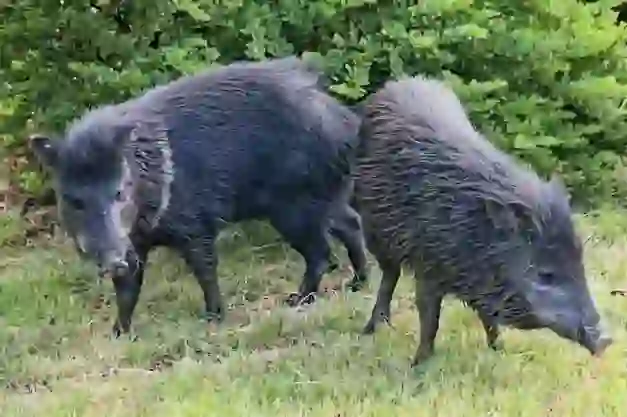
Mammalia-Cetartiodactyla-Suidae-Boar genus.
Length 50~200cm. Weight 6~280kg.
The wild boar’s habitat is wide-ranging, from Europe to Asia. Depending on the breed, some wild boars are very small while others are larger than bears.
In Japan, mainly “Ryukyu wild boar” and “Japanese wild boar” inhabit the country. Ryukyu wild boars are often found in southern areas including Okinawa, while Japanese wild boars live in various places from eastern to western Japan. Therefore, you may see Japanese wild boars more often.
Their body color is mostly brown to black and dark brown. Their body is thick and their legs are short, which makes them look similar to pigs that are famous as livestock. However, pigs are actually animals that have been bred from wild boars. In other words, wild boars are the ancestors of pigs.
The wild boar has teeth called “canines” above and below its jaw. Although they are often called “fangs,” they are actually canines in zoology. Wild boars’ canines are larger and more prominent in males than in females, so it is often thought that females do not have them. However, females also have canines.
Since the growth of the canines stops at around 2 cm, the canines of females are said to be small and hard to see. Females rarely use their canines to attack, but males are said to have developed larger canines for fighting over females.
The breeding season is from autumn to winter. Since only the male who wins the fight can leave offspring, the relationship between males and females is considered to be polygamous.
The gestation period is about six months, and the average number of offspring a boar gives birth to at one time is four, but there have been times when as many as eight were born.
The lifespan of wild boars is about 5-10 years, but if they are kept in captivity, they can live up to 10-20 years. Some wild boars have lived as long as 27 years.
Boar Q&A

Where does the boar get its name?
In English, it is called “wild boar,” but in Japanese, it is called “inoshishi.” This is because the word “inoshishi” comes from the Japanese word “i,” which was used to refer to wild boars over 1,000 years ago in the Yamato language.
This name was given because wild boars make a sound similar to “wi.” The word “shishi” meant “meat of an animal that can be used as food.” The name “inoshishi” was created by combining these two meanings.
By the way, the young of wild boars are called “uribou,” which also has a meaning. This is because their striped pattern on their body looks like the vegetable “uri (melon).” This striped pattern serves as a protective coloration to protect them from predators.
※Protective coloration refers to colors that help animals blend into their surroundings and make it difficult for predators to spot them.
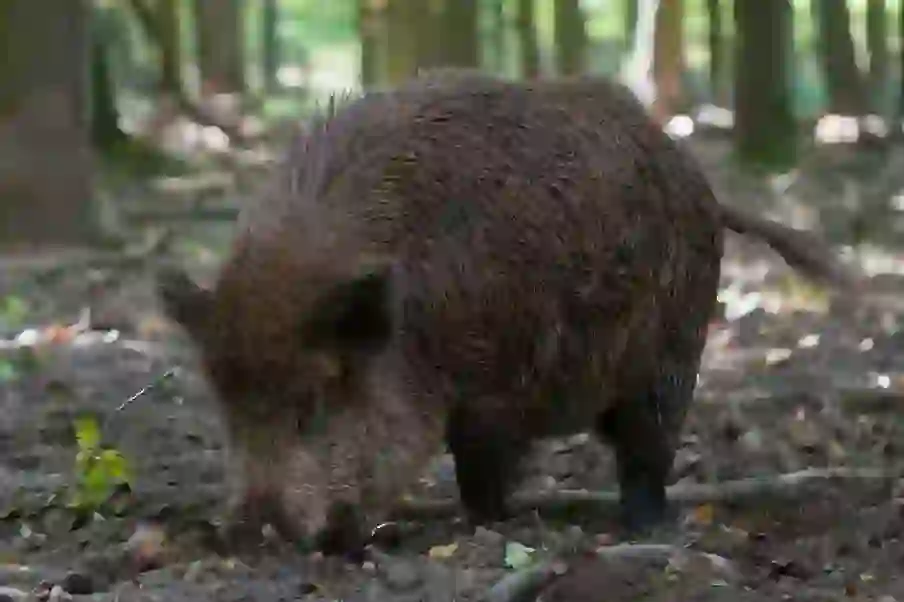
What do boars always eat?
Wild boars are omnivorous and eat various things.
The most common things they eat are bamboo shoots, nuts, fruits, and tree roots. They also seem to eat small animals such as small snakes, frogs, and mice.
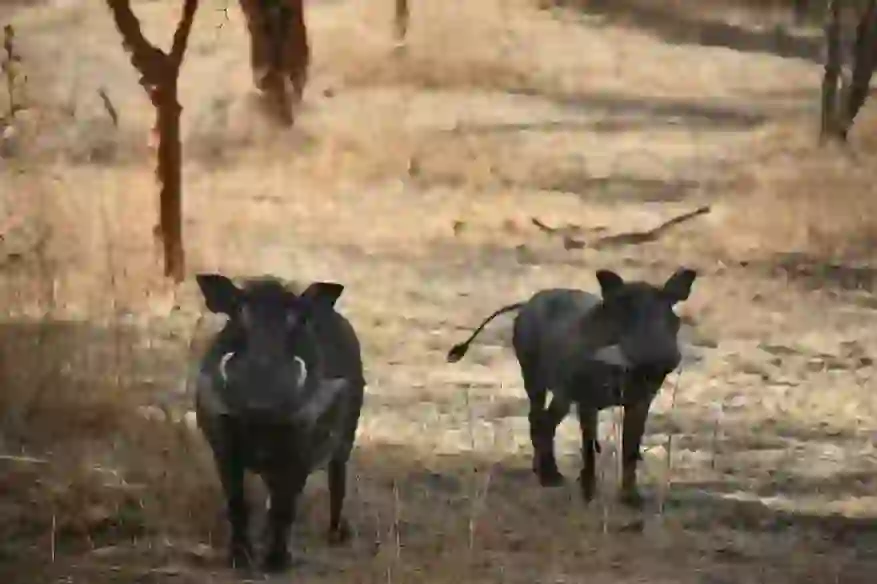
Why do wild boars live in the mountains?
When we encounter wild boars, it is mainly in places surrounded by nature such as mountains and fields. So why do wild boars prefer to live in the mountains?
There are several theories, but wild boars are omnivorous and eat a lot of plant-based foods. Mountains are full of grass and trees, and nuts and fruits grow there too. It is thought that they prefer to live in the mountains because there is relatively plenty of food.
In addition, the young of wild boars called “uribou” are often preyed upon by many natural enemies such as foxes, crows, and birds of prey such as owls depending on the location.
However, if they are in the mountains, the striped pattern of the “uribou” blends well with the trees growing on the mountain, allowing them to hide in the scenery. If they were in an open grassland, they would be easily found. Therefore, it can be said that they are relatively safe in mountains where many trees grow.
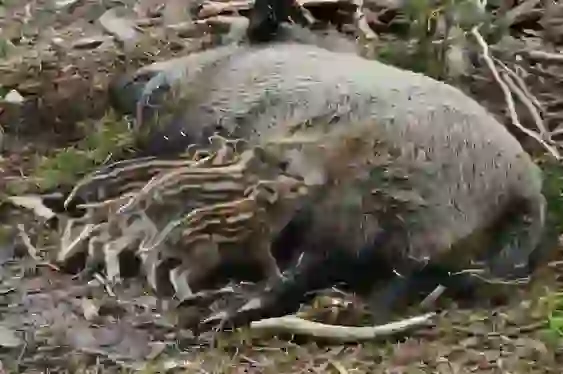
Can Uribo be kept as a pet?
When keeping a rare animal as a pet, it is necessary to follow the laws established by each country. This time, we will introduce whether it is possible to keep a wild boar cub at home in Japan. This is “Uribou,” a wild boar cub with cute striped patterns. Can it be kept as a pet at home?
The answer is yes. However, before you decide to keep one, there are some points to keep in mind.
Wild boars are not protected animals in Japan but are treated as “hunting animals,” so it is possible to receive one as a gift and keep it as a pet.
It can be difficult to purchase small boar cubs, as they are not sold in pet stores first. Most people who keep them have found them outside and rescued them.
The boar cubs themselves are very friendly to people, and they are sometimes even sweet to their owners.
However, it should be noted that boar cubs grow very quickly. In fact, they only stay cute for about four months after birth and then change into adult wild boars without their striped patterns.
When they grow up, they weigh about 70 kg and can even reach 100 kg. They also become much stronger and faster than when they were boar cubs.
They can run at speeds of up to 40 km/h and jump over fences up to 2 meters high.
They are also very strong and can easily break through weak fences. If they escape and hurt someone else, it can be very serious.
While boar cubs can be kept in small spaces, adult wild boars require large areas for exercise. Therefore, it is impossible to keep them in apartments or condominiums.
If you happen to rescue a boar cub or decide to keep one as a pet, please remember that they grow up very quickly and require large spaces when they become adults.
If you really want to see a boar cub, you can visit a zoo as one option.
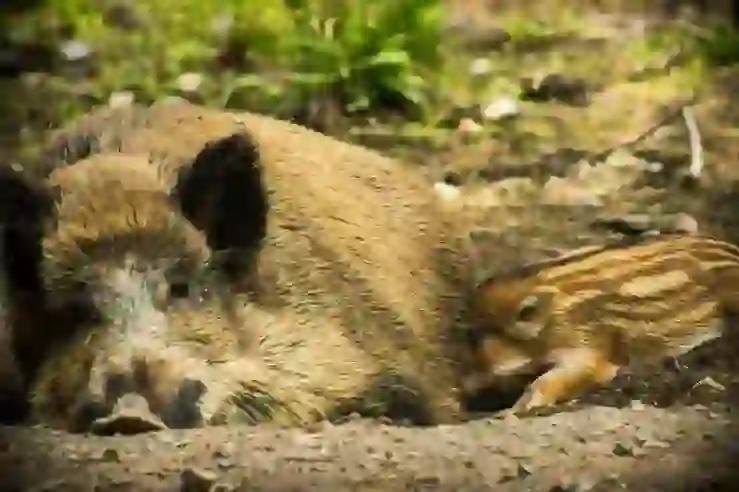
Do wild boars really have a ferocious personality?
Have you ever heard of the phrase ‘reckless rush’ (猪突猛進)? It is a four-character idiom that means ‘to rush straight ahead without looking around for one thing’. The kanji for ‘inoshishi’ (wild boar) is used in this idiom. Is the wild boar really a reckless animal?
First of all, half of it can be said to be true.
First of all, why is the kanji for “inoshishi” used in this four-character idiom? It is thought that it was associated with the sight of a wild boar rushing straight ahead without looking back.
Certainly, wild boars may rush forward when chased by humans or suddenly frightened.
However, they do not always come at you like that. Wild boars have smart parts and are said to judge the situation and act accordingly.
In one experiment, wild boars were ambushed on a course where they were running, and when the parachute was opened in front of them, they made a sharp turn and returned along the same path. When obstacles such as cardboard boxes were placed on the same course this time, the wild boars avoided them while moving forward. This is an action that cannot be done by an animal that rushes without thinking.
In addition, when they were repeatedly taught to press a specific button to receive food, they succeeded 4 out of 5 times. This is evidence that wild boars also have high learning ability.
Furthermore, in a French zoo, a breed of wild boar called “Visayan wild boar” was confirmed to have started digging soil using tree bark.
When surprised, they may rush forward without thinking, but wild boars are animals that can use their heads well if they can make calm judgments.
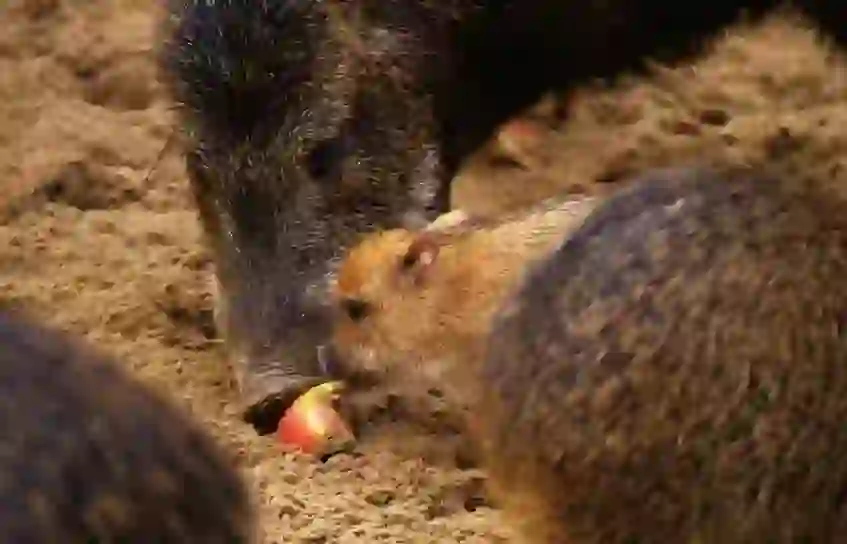
What to do if you meet a wild boar?
Wild boars are often featured in TV news and are one of the wild animals that people encounter frequently. But what should you do if you encounter a wild boar in the mountains or on the road?
First of all, wild boars are diurnal animals, so you are more likely to encounter them during the day.
Surprisingly, wild boars are said to be timid. So if you encounter one, it is more likely that it will run away from you unless you touch it. Do not tease or chase them.
When you see a wild boar running towards you, it may look like it is charging at you, but it is said that it is just surprised and trying to move forward.
If you encounter one on the road, it is effective to move to the side and open up the road. Be careful not to turn your back on them as much as possible.
In addition, in order to avoid being attacked in the mountains, it is necessary to let them know where we humans are. Therefore, ringing a bell while walking is said to be effective.
When encountering them on the road, it is also said that opening up the road when they come running towards you is effective.
Another event that has a high probability of encountering them is when you find a baby wild boar.
Indeed, it is understandable that you may want to approach baby wild boars because they are very cute. However, it is rare for them to walk alone on the road without their parents nearby, as they are vulnerable to external threats.
From the perspective of humans, you may have only touched the baby wild boar, but from the perspective of the parent wild boar, it may seem like their child is being attacked! Therefore, there have been cases where people were injured by excited parent wild boars.
However, there are cases where a baby wild boar is really weak and alone. If you want to protect them, it is better to consult with a hunter rather than trying to do it alone.

Would you like to become a part of the 'Animalbook.jp'?
Turn your knowledge into Q&A and share it with the world. ※Publication will be activated after purchase. Let's share information together!
Boar Type of List
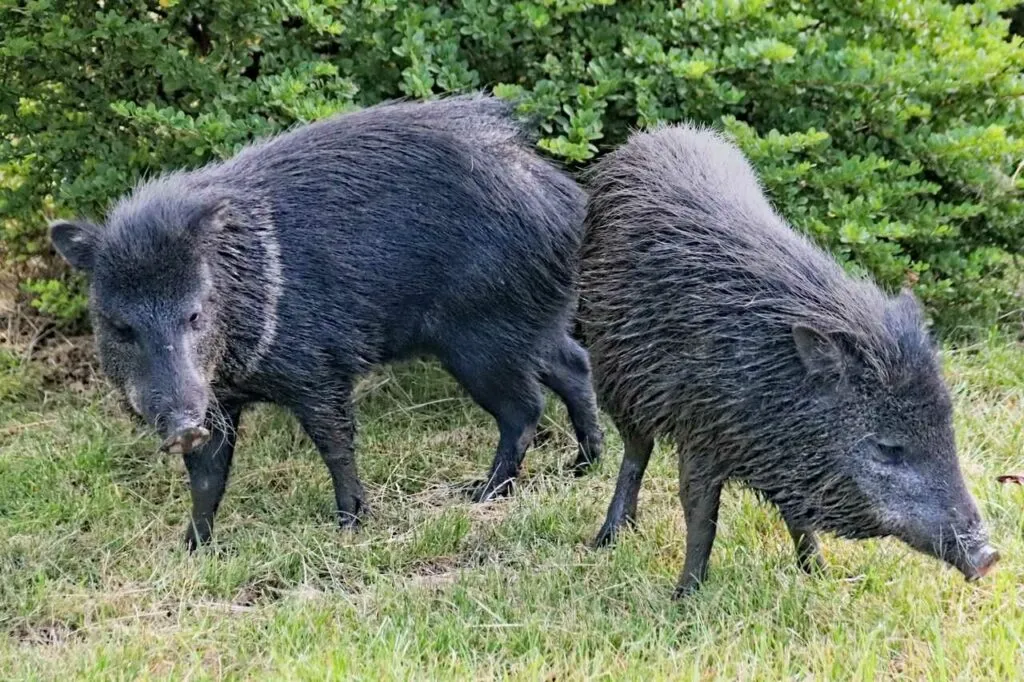
・Japanese wild boar. ・Ryukyu wild boar. ・Visayan wild boar. ・Desert warthog. ・Red River Hog. ・Pygmy hog.
Information
Congratulations! You are the first commenter!

Create Your Favorite List!
Boar
Save the animals you love! Build your own list to quickly revisit your favorites later.

Would you like to leave a comment?
※Please note: This is for the purchase of rights to post comments within the article.
Find Your Favorites!
Our shop offers a unique and attractive selection of goods themed around various animals.
Boar References

- 環境省 https://www.env.go.jp/nature/choju/plan/plan3-2a/chpt2.pdf
- てんのうじどうぶつえん なきごえ http://nakigoe.jp/nakigoe/2007/01/nenga.html#:~:text=イノシシ
- 語源由来辞典 http://gogen-allguide.com/i/inoshishi.html#:~:text=いのしし
- 栃木県 http://www.pref.tochigi.lg.jp/m62/education/shougai/kanrenshisetsu/documents/inosisi.pdf
- Chiik! https://chiik.jp/articles/1Agos#:~:text=うり坊
- 世界雑学ノート https://world-note.com/wild-boar-life-expectancy/#:~:text=猪の寿命
- petty https://petty.jp/8582
- 北九州市 https://www.city.kitakyushu.lg.jp/san-kei/27500007.html
- 茨城県 https://www.pref.ibaraki.jp/nourinsuisan/hokunourin/kikaku/kikaku/inoshishinoseitai.html
- 知識の宝庫!目がテン!ライブラリー https://www.ntv.co.jp/megaten/archive/library/date/07/01/0107.html
- 四字熟語の勉強.com https://study-yoji-jukugo.com/chototsumoushin/#i-3
- NATIONAL GEOGRAPHIC https://natgeo.nikkeibp.co.jp/atcl/news/19/100800578/
- 日テレZIP! https://www.ntv.co.jp/zip/masu-college/post/011286.html
Boar Introduction of media used
出典:https://pixabay.com/videos/id-24804/

出典:https://unsplash.com/photos/506AeZ77FfM

出典:https://pixabay.com/images/id-3036549/

出典:https://pixabay.com/images/id-2216247/

出典:https://pixabay.com/images/id-1721238/

出典:https://pixabay.com/images/id-3364245/

出典:https://pixabay.com/images/id-4658097/
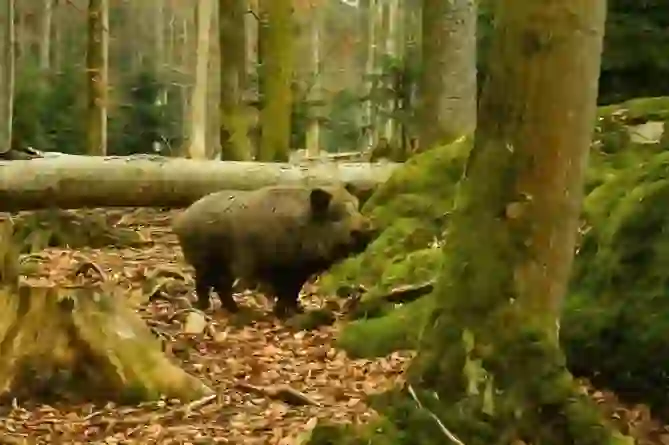
出店:https://pixabay.com/images/id-1328949/
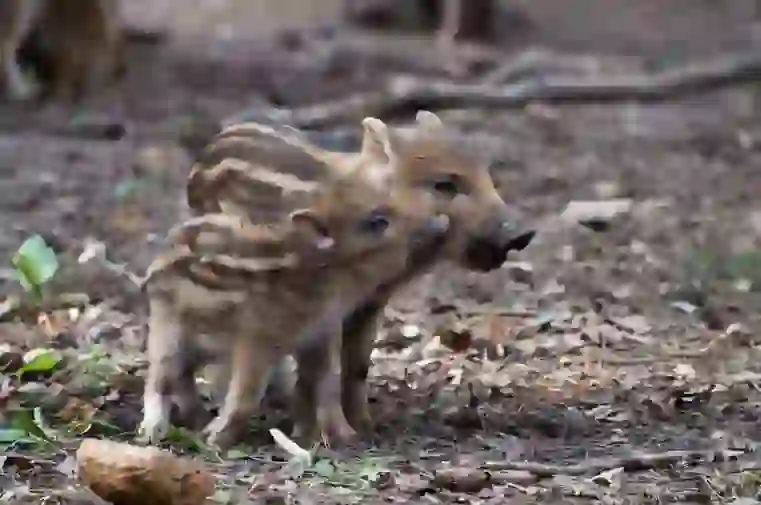
出典:https://pixabay.com/images/id-2224212/
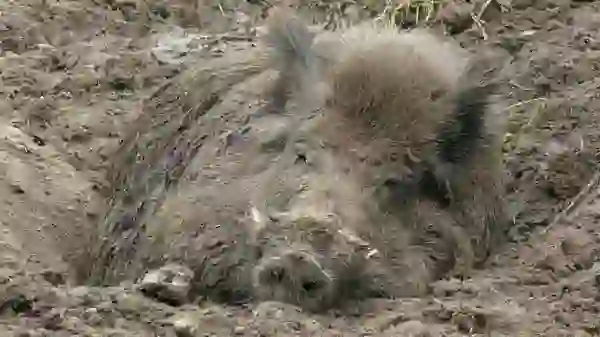
出典:https://pixabay.com/images/id-4266067/
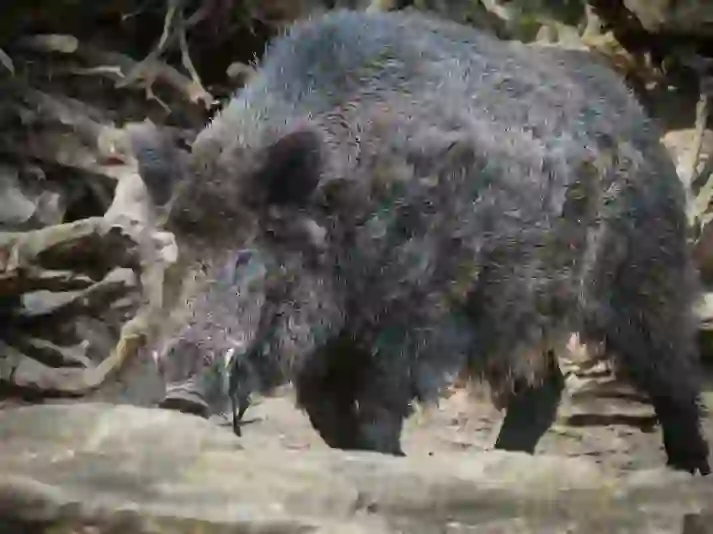
出典:https://pixabay.com/images/id-2031690/
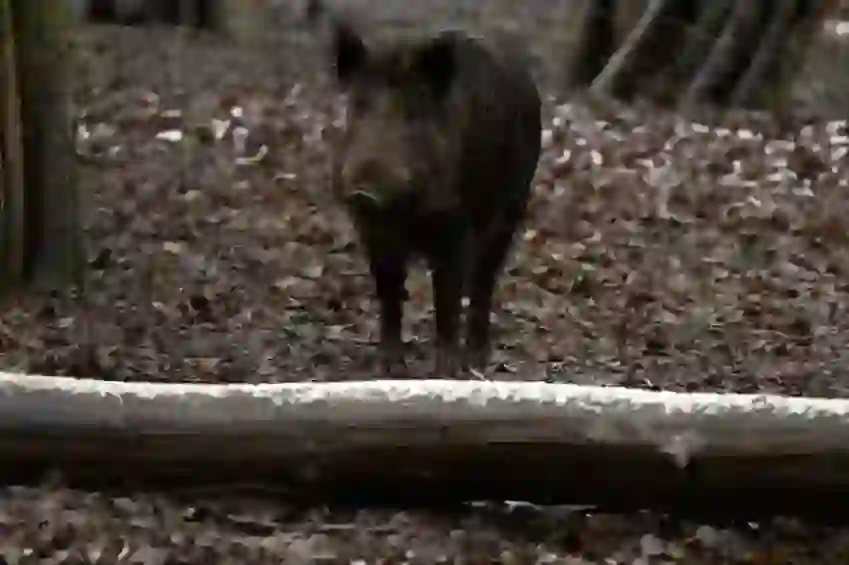
出典:https://pixabay.com/images/id-657911/
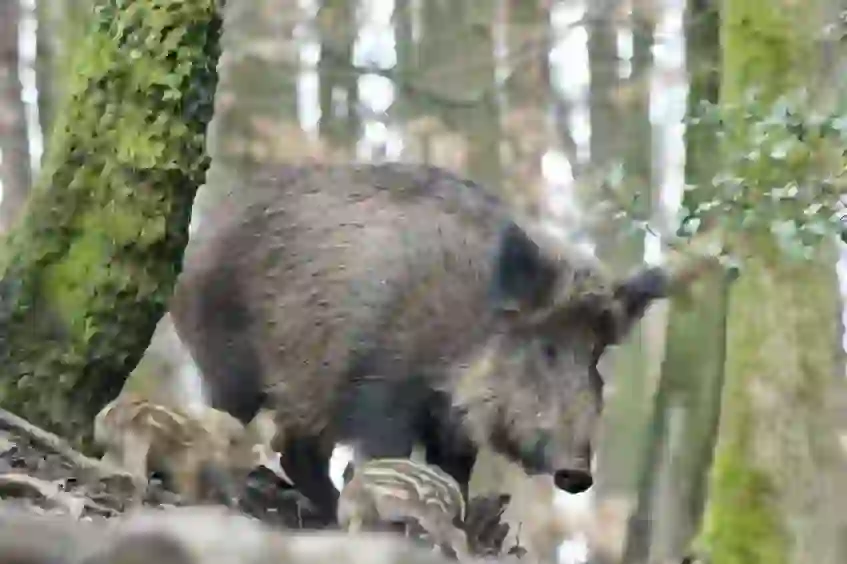
出典:https://pixabay.com/images/id-3284138/

Help Enrich Our Animalbook.jp with Your Media!
We are constantly looking to expand and enrich our Animalbook.jp with amazing photos and videos of animals. If you have any media that you'd like to share, please contribute and help us showcase the beauty and diversity of the animal kingdom. Your submissions will be credited and featured in our encyclopedia, reaching a wide audience of animal lovers.


















